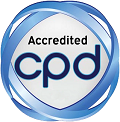
Biography
Biography: Sasikanth Adigopula
Abstract
The human heart has limited regenerative capacity. In patients with Cardiomyopathy both adult stem cells (ASCs) and human pluripotent stem cells (hPSCs) have the potential to facilitate development of cell-based therapies. However, stem cell-based therapies have been limited by numerous challenges, including the proarrhythmic nature of stem cell-derived cardiac grafts. This is from differences in electrophysiologic maturity, gap junction isotypes, cell orientation and wave propagation between graft and host myocardium. On injury, the normal architecture is disrupted and cardiomyocytes are replaced by scar tissue and proliferating fibroblasts, which in turn result in compromise of the structural integrity and adverse remodeling of the heart. These structural changes caused anisotropy, which provide substrates for reentrant arrhythmias. In addition, the action potential duration prolongation potentially produced early after depolarizations or delayed after depolarizations. The key mechanisms leading to arrhythmias in stem cell therapy are lack of electromechanical integration, transplantation of non-cardiomyocyte derivatives, local injury and edema, nerve sprouting, route of cell delivery with intramyocardial being more arrhythmogenic than retrograde intracoronary, immunologic mechanisms leading to rejection and inflammation and graft automaticity. Attempts to introduce exogenous cells for regenerative purposes should consider the hostile environment, the lack of normal myocardial structure and the potential for the introduction of cells in a microenvironment in which normal cardiomyocytes fibers are replaced by scar. Newer delivery systems including cell-seeded patches and scaffold-free cell sheets reduced arrhythmias. Cell coupling and engraftment are also important to reduce risk of reentrant pathways and automaticity, which serve as a nidus for arrhythmia.

